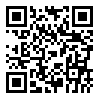<>
Volume 5, Issue 2 (Journal of Language Teaching, Literature & Linguistics (JLTLL) 2022)
JSAL 2022, 5(2): 69-91 |
Back to browse issues page
Download citation:
BibTeX | RIS | EndNote | Medlars | ProCite | Reference Manager | RefWorks
Send citation to:



BibTeX | RIS | EndNote | Medlars | ProCite | Reference Manager | RefWorks
Send citation to:
Alavi R. (2022). A comparative comparison of Sharafnameh and Haft Paykar; A case study of legends, myths and folk tales [In Persian]. JSAL. 5(2), 69-91.
URL: http://jsal.ierf.ir/article-1-36-en.html
URL: http://jsal.ierf.ir/article-1-36-en.html
Assistant Professor, Department of Persian Language and Literature, Faculty of Humanities Literature, Sanandaj Branch, Islamic Azad University, Sanandaj, Iran , rog.alavi@yahoo.com
Abstract: (1635 Views)
One of the great poets of the Azerbaijani style is Nizami Ganjavi (530–614 AH). These writers frequently include traditional tales in their poetry. In the current study, the author has looked at the stories in Sharafnameh and seven military characters in an effort to determine the degree of their military application by outlining these occurrences and how the poet in question used them in his literary and artistic works. In Sharafnameh and Haft Peikar, instances of mythical, romantic, and folk tales were extracted and mentioned before being thoroughly examined. Esfandiar, Key Khosro, Bahman, Fereydoun, Mani, Harut and Zohra, Iskander and Roshank, Iskander and the Chinese girl playing the piano, Iskander and Nooshabeh, etc. are some of the most well-known mythical and folk tales in the two books listed. In contrast to Sharafnameh, which has more of a historical flavor, Haft Pekeykar has more folk stories and legends than poetry. The reason for this can be observed in the numerous incredible myth-making and events surrounding it. In Haft Paykar, Nizami has made use of the impacts of oral culture (beliefs and myths). Through the use of regional mythology, Sharafnameh aims to illuminate tales.
Type of Study: Research |
Subject:
Sociolinguistics
Received: 2021/12/21 | Accepted: 2022/01/21 | Published: 2022/04/25
Received: 2021/12/21 | Accepted: 2022/01/21 | Published: 2022/04/25
Send email to the article author
| Rights and permissions | |
 |
This work is licensed under a Creative Commons Attribution-NonCommercial 4.0 International License. |






